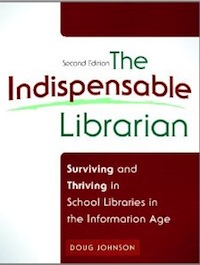Chickens, Crickets, and Rejection
Chickens, Crickets, and Rejection: Getting Published for the First Time
Minnesota Media, Winter 1991
 Each time Jane, my media aide, processed a new children’s picture book for my media center, I heard the same comments:
Each time Jane, my media aide, processed a new children’s picture book for my media center, I heard the same comments:
“Look at these pictures! A child could have drawn them. There can’t be more than a dozen sentences in this entire book. Anybody could write a book like this!”
After hearing these comments for two years, one December afternoon I decided I’d had about enough. These were books I’d personally selected. My feelings were getting hurt. “OK, Jane, if it’s that easy, you write a children’s book. I’ll write one along with you. We have a quiet week during the Christmas holidays. We’ll write our stories then. Write, Jane, write.”
During that week I wrote three short tales which had been mental rough drafts for some time. I drew quick, cartoonish illustrations for two of the stories. Jane, I guess, found better things to do during the break.
I read the stories to some of my students during story hour when they returned from holiday. I’d like to say my prose was met with enthusiasm and glee, but polite attention and mild curiosity would be a more accurate description of the response. A few of my elementary teachers read the pieces and offered editorial advice and, yes, encouragement. I re-wrote, polished, and printed. It was January of 1988.
I wrote a short cover letter and mailed copies of each of my three stories to a dozen different children’s book and magazine publishers, using an old Writer’s Marketplace for addresses.
Well, it wasn’t quite that simple. Did I mention I was working in Saudi Arabia at the time? The mail clerks at the company post office were gruff at best, downright nasty sometimes, and always suspicious. When I delivered my first batch of manuscripts in fat manila envelopes, the elderly fellow who ran the stamp window narrowly eyed the 36 packages, glanced at the clock, and shut the window ten minutes early. When I returned the next day, I was told to wait.
I waited.
Fifteen minutes later, the stamp man returned with a postal inspector. I unsealed an envelope and attempted to explain the purpose of the writing and the cartoon chickens. “What then is this story about? Does this writing speak of Saudi Arabia or Muslims? Who is this man in the pictures? Have the things you write about actually happened to you? Do you expect to make much money from this story? Will you have some tea?” Finally, after much discussion and a postage payment of about $210 (for the 36 envelopes), the postal inspector decided I was no Salman Rushdie and my manuscripts were mailed.
I waited.
In March a genuine variety of responses began to arrive - rejection letters, rejection notes, and rejection postcards. Most were form letters. Some made suggestions:
Please include SASE with manuscripts next time.
We do not accept photocopies.
Please do not send computer printouts.
But they basically all said the same thing: “Your material does not meet our needs.”
There were a few “teasers” in with the cooler rejections. Dial books wrote, “We are interested in seeing more of your work.” Houghton Mifflin replied, “[Your manuscript] is with a second reader,” and “It is very imaginative and wonderfully silly.” Abingdon Press said, “It is unique and lots of fun.” And Scholastic commented, “Your manuscript had us all grinning and giggling. In the end, though, the book club editors weren’t enthusiastic enough to make a commitment.” I felt like the fellow, who at the end of a lovely evening, hears his date say, “You know, I really like you…as a friend.” Sigh.
Out of sheer perversity, I posted my rejection slips on a bulletin board behind my desk. I grouped them around a quote from Mark Twain: “Write without pay until someone offers pay. If nobody offers pay within three years, the candidate may look upon this circumstance with the most implicit confidence as the sign that sawing wood is what he was intended for.”
In April I received a short note from Cricket Magazine which said my story “Really Slick Chicken Tricks,” was under editorial consideration. But by July, with over 30 rejection notices covering my bulletin board, I’d decided to pursue more realistic goals: swimming the Persian Gulf, becoming the Emir of the Eastern Province, getting Princess Di to stop in for supper…
I went on vacation.
On my return to work in early September, a heavy, cream colored envelope from Cricket was in my mail. “Your story was accepted.” I was told the publisher would pay $.25 a word, the story would be edited, and there was no set date for its publication. An edited version did arrive by mail. About 20% had been judiciously cut, including all brand names. I was sorry that the story’s “Piggly-Wiggly” had become a generic “grocery store” - the words had always gotten a chuckle from my listeners. I returned the signed forms accepting their acceptance of the story. It was October of 1988.
I waited.
My five year stint in Saudi was up in July of 1989. I had not heard back from Cricket. Nonetheless on the resume I used as I looked for stateside jobs, I included under the “Professional Contributions” section: “Children’s story, Cricket Magazine, publication date to be set.” I don’t know if I impressed anyone or not. I hesitated adding the title “Really Slick Chicken Tricks” itself to the resume. Somehow it didn’t have the same serious, pedagogical ring as “Using Business Software in the Classroom” or “The Role of Reading Aloud in the Secondary School Curriculum.” (Even as I write this, I wonder how “Chickens, Crickets, and Rejection” will sound on a future resume. Should I change the title? How about “The Confluence of Avian Bio-representation, Self-Image, and the Third Estate: a Cathartic Narrative Exposition”?)
I was still waiting.
Late November 1989, I finally received another letter from Cricket, 13 months after I had last heard from the magazine. “We are planning an issue of the magazine which has a ‘chicken’ theme. Your story will be included.” The letter was addressed to Douglas Anderson. I was beginning to wonder if they had had second thoughts about my masterpiece. They hadn’t paid me for it yet, either.
I waited, but not long.
A few days later I received from the art editor a three page critique of my cartoons, along with a mock layout of the story. He reported that Cricket wanted me to re-work the original art I had submitted. His letter included the following advice:
- There will be a two-tone separation.
- You can “bleed” drawings.
- We will use Panetone 212 as a second color.
- Use matte acetate for overlays.
I was in trouble. This very nice, very sincere man was writing to me as though I knew something about graphics and design. My drawings are the product of a boring education - I doodled to keep my mind occupied in high school and college classes. I learned to draw chickens in social studies and cataloging courses!
However, the pay for the drawings was twice as much as for the text of the story. The “new” art was due January 10, 1990. There were to be penalties for lateness. I signed the contract.
In a cold sweat, I procrastinated until January 8. This was after all, the same publication which uses the art of Tomi De Paola and Trina Shart Hyman. I am not worthy. I am a fake. I will be found out. There will be penalties for impersonating an illustrator.
Finally, the day before the illustrations were due, I got out my light board, pens, and some bargain-basement drawing pads decorated with Smurfs. I encouraged my family to stay with the grandparents until I was finished. I put on a Leon Redbone Christmas album, cracked my knuckles, and drew.
I arrived at the Madison Lake post office with the drawings sandwiched between Smurf cardboard covers five minutes before closing on January 9. I sent them overnight express, along with a prayer that the art director would not make me re-draw anything.
I waited.
May 1990, twenty-seven months after I first wrote “Really Slick Chicken Tricks,” my complimentary issues came in the mail. I gave one copy to my boss and sent one to my mother. I got a write-up in the local paper. It was all rather anti-climactic - no movie deals, no cover of People magazine, no parties, no sultry women wishing to bask in my fame. But my mother was very proud.
So what did I learn from this?
1) Don’t be in a rush to see your work in print. Cricket receives 1200 unsolicted manuscripts a month.
2) Don’t expect a huge financial return for your labor. Had I not sold the art work along with the story, I’d still be $50 in the red after paying postage.
3) Listen to children’s responses when you read your work. Have a friend read your writing critically. Find encouragement any place you can.
4) If you don’t already have one, develop a thick skin. As I write this article, I know there is a real chance it won’t be accepted for publication. Or if it is printed, some readers will not like it. Remember Anne Dillard’s words “You do what you do out of your private love of the thing itself.” Write for your children and students, for your friends, for your “private love of the thing itself.”.
5) Try to refrain from giving your stories goofy names. It doesn’t look too good on the resume.





Reader Comments (1)
I never tire of this story (or of any of your stories, for that matter). This is the first I've ever seen of the 'cover' of the book, and I didn't realize that you'd written this for Minnesota Media magazine way back in 1991 (which seems like just yesterday). Every time I get the urge to write a book, I revisit your tale, and then the urge goes away.